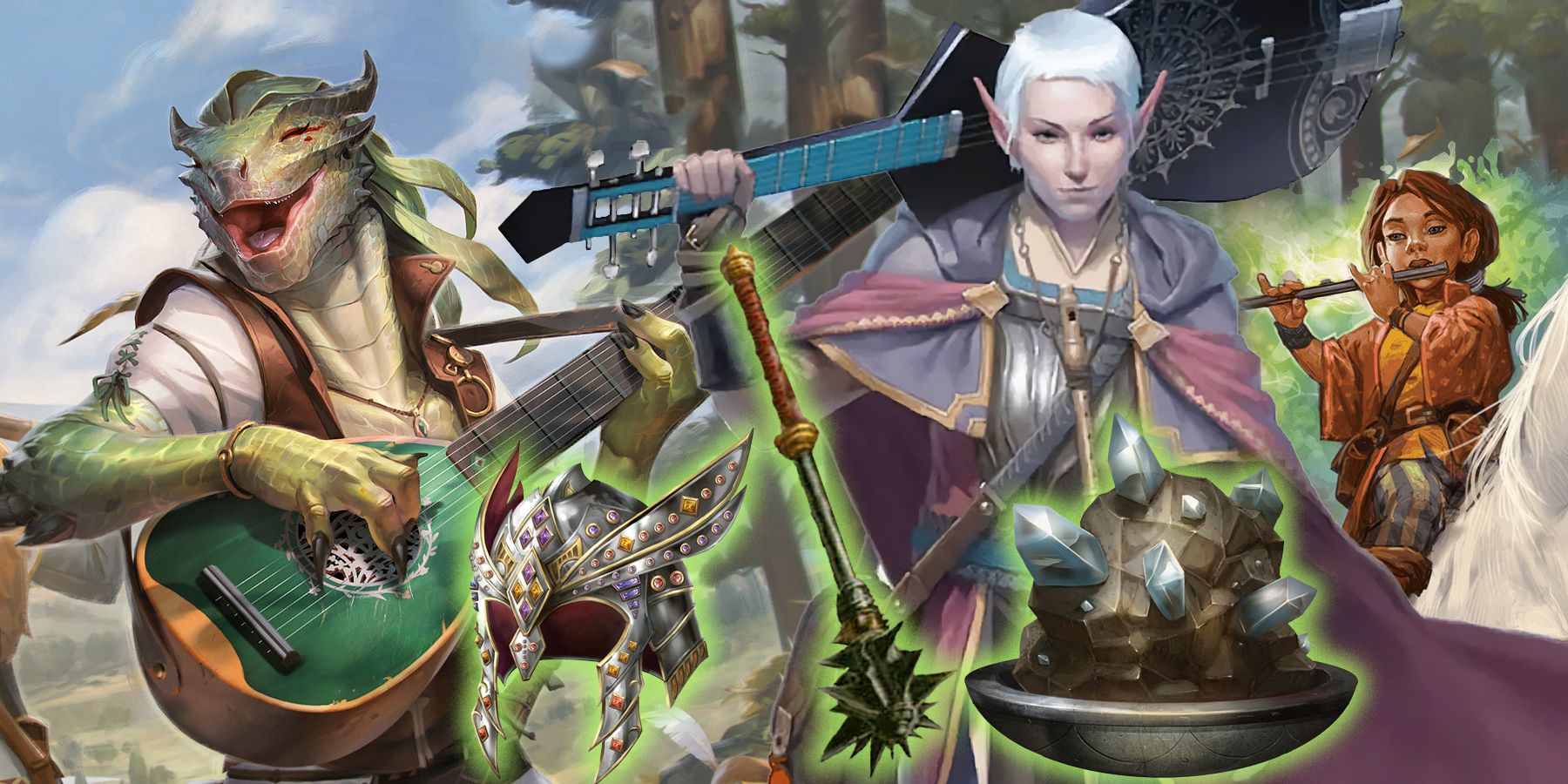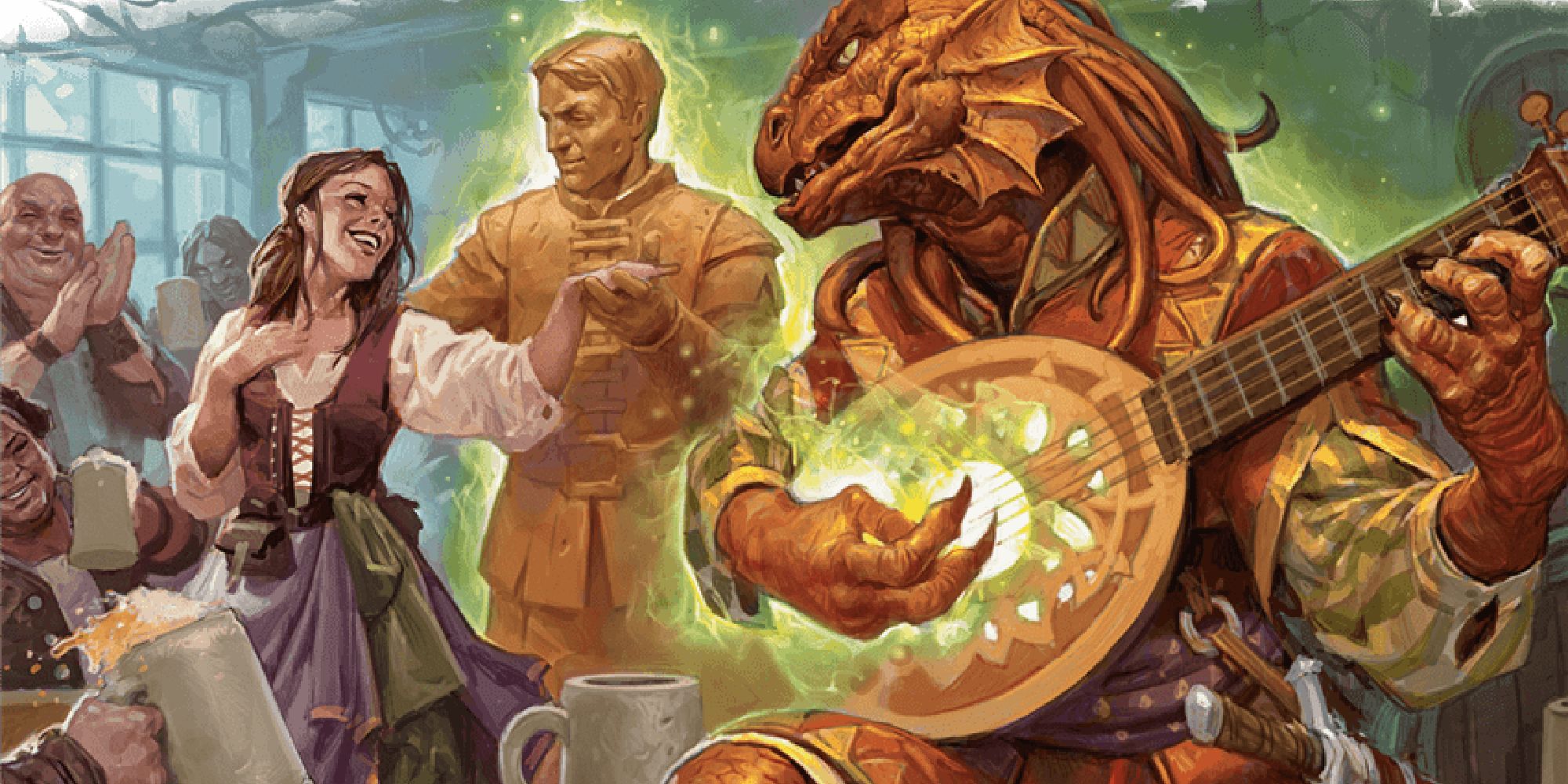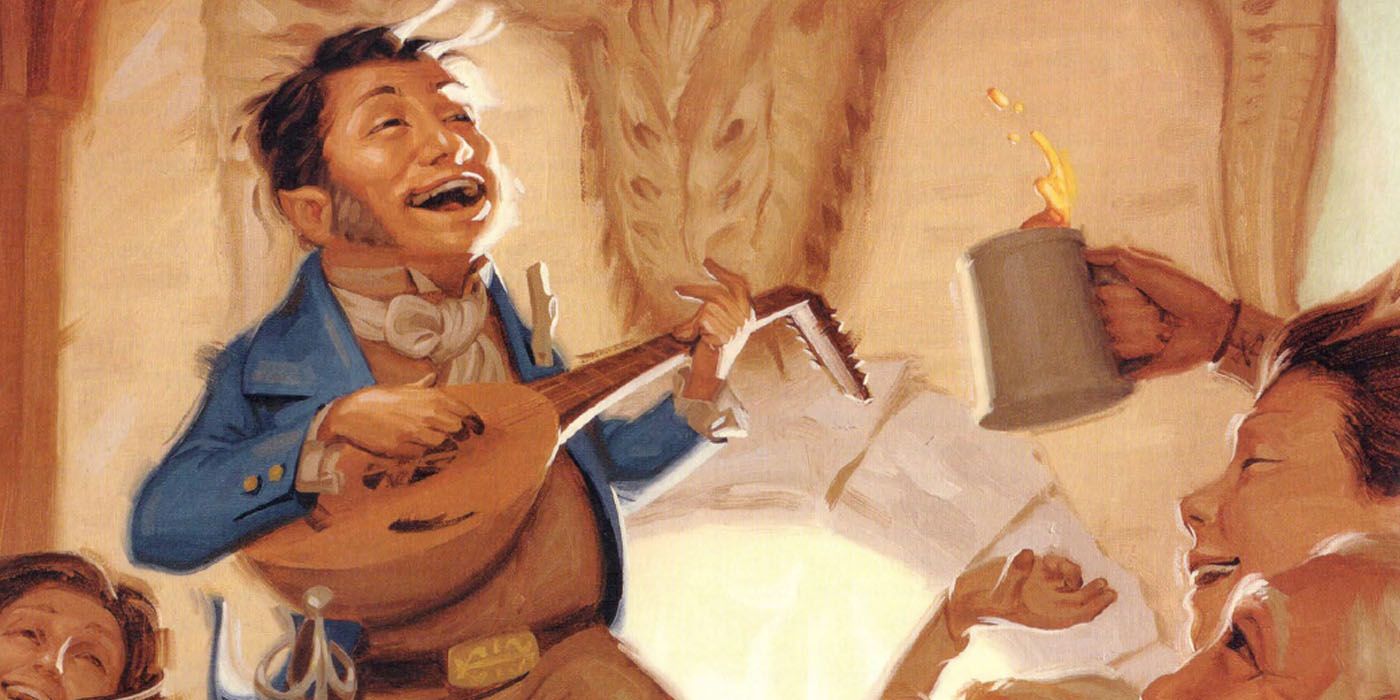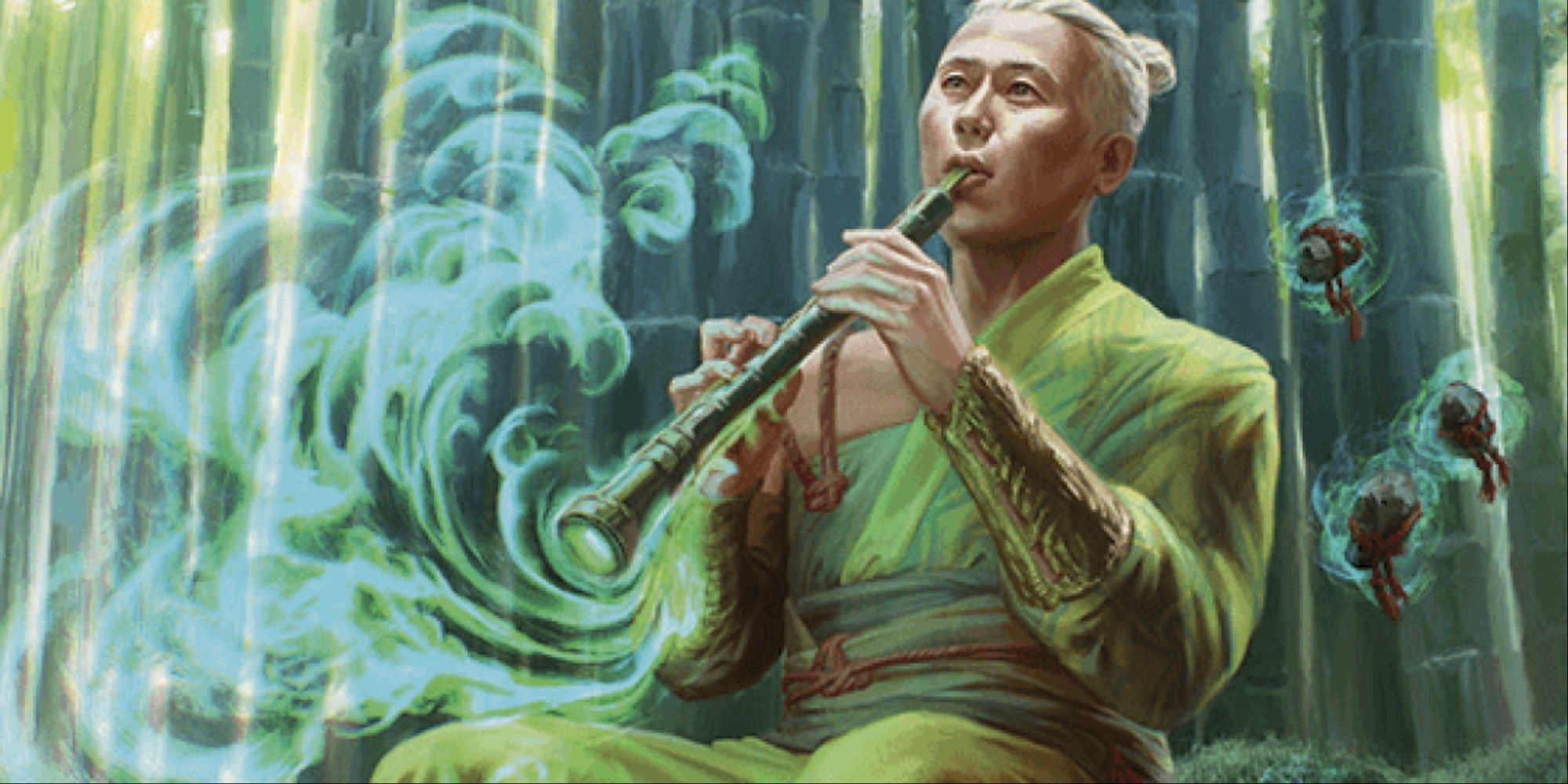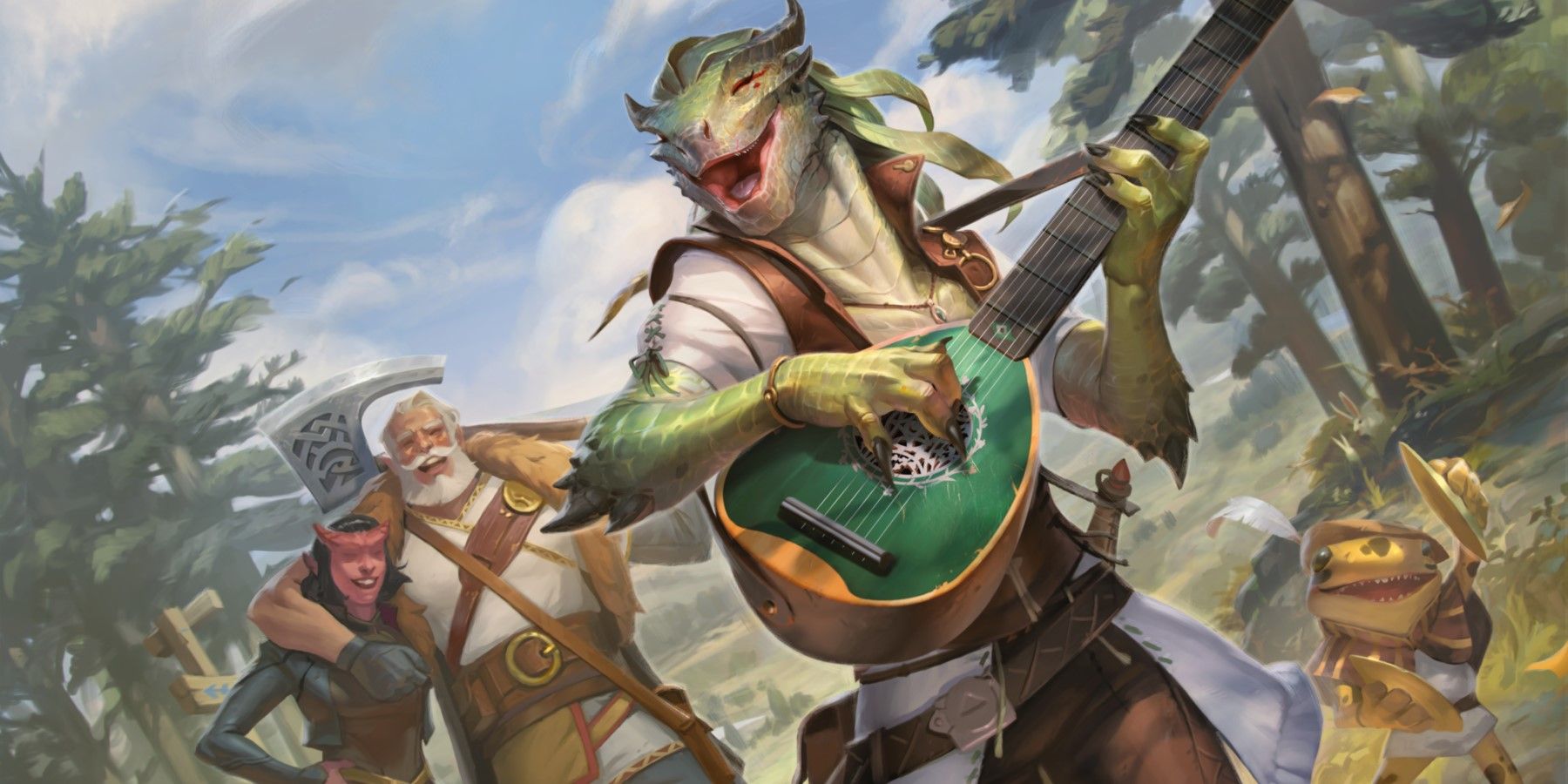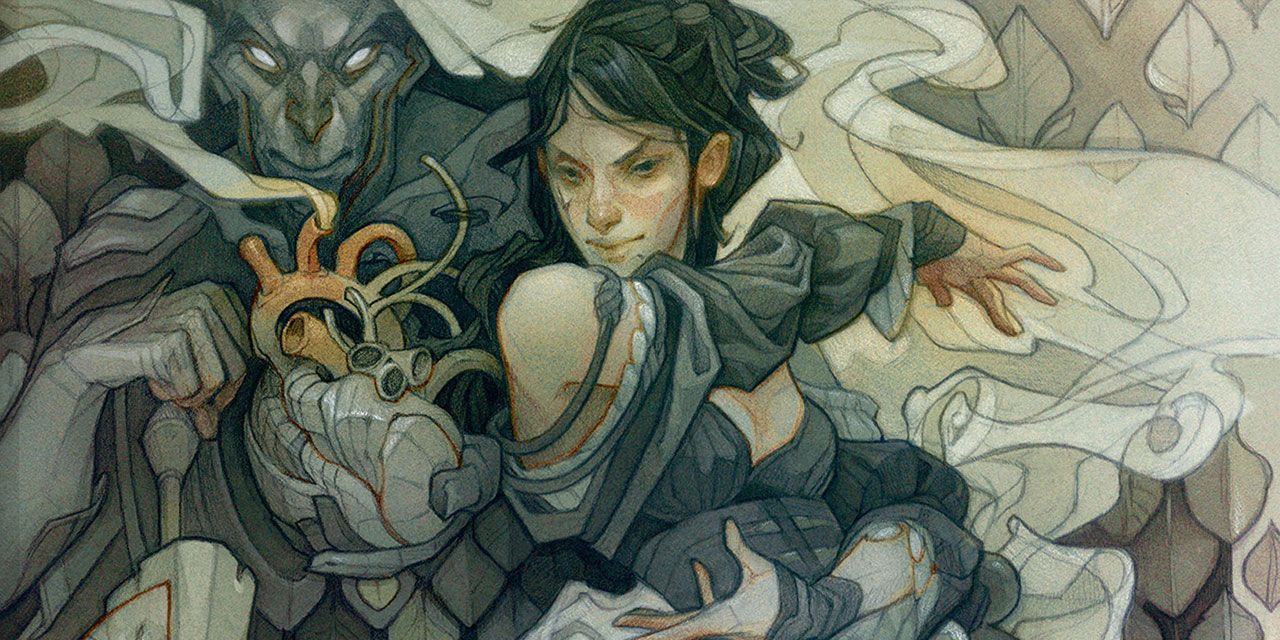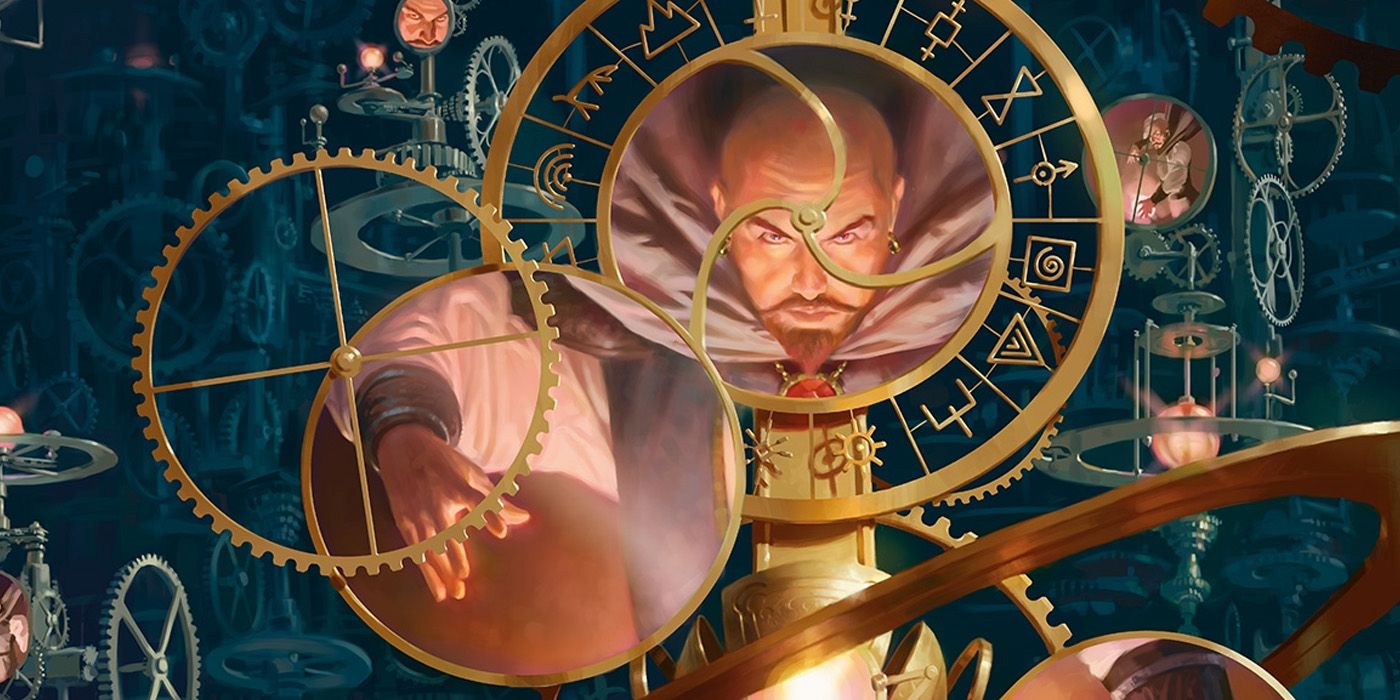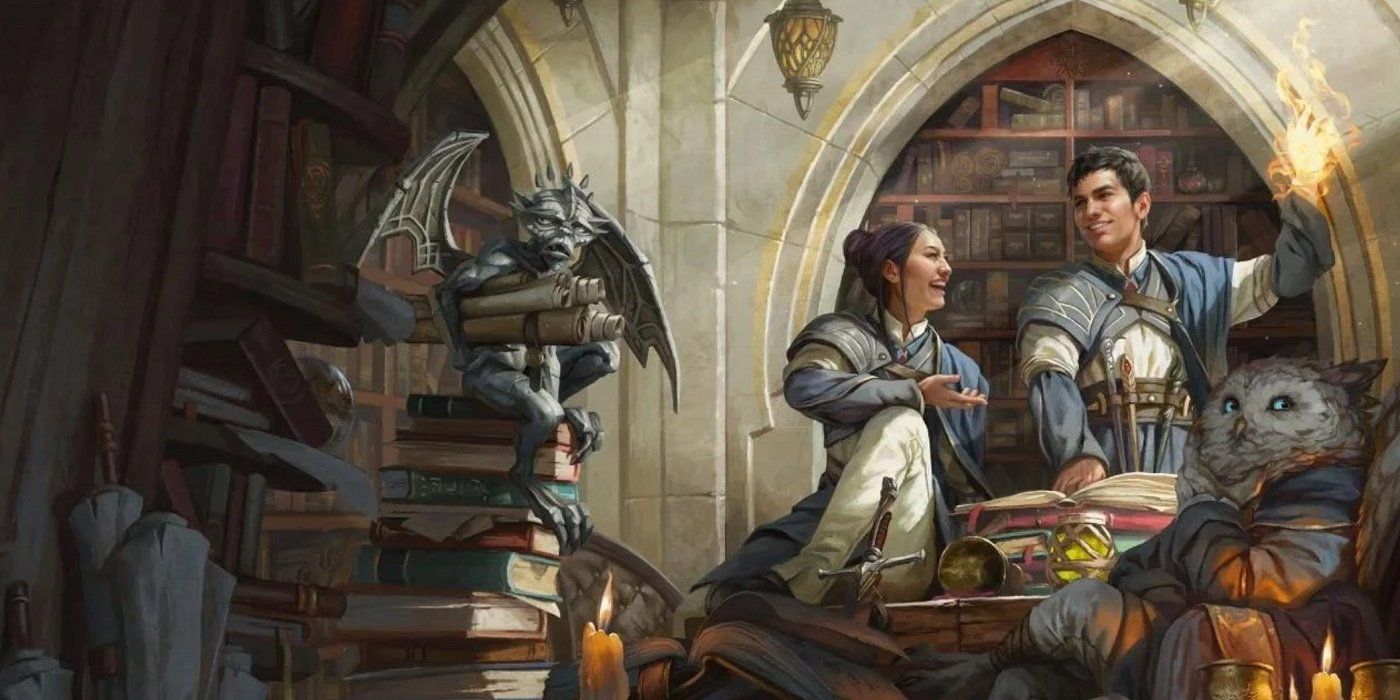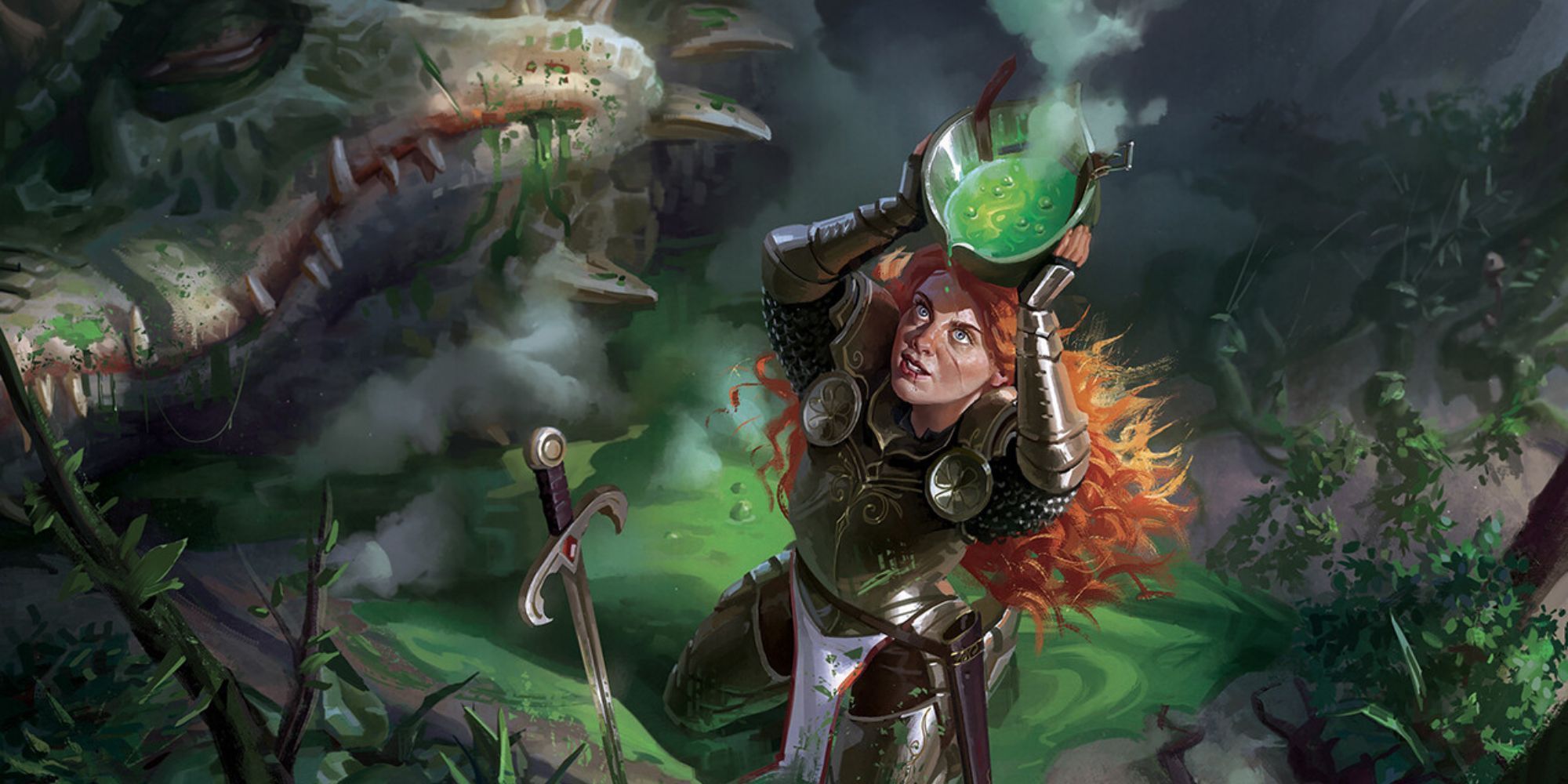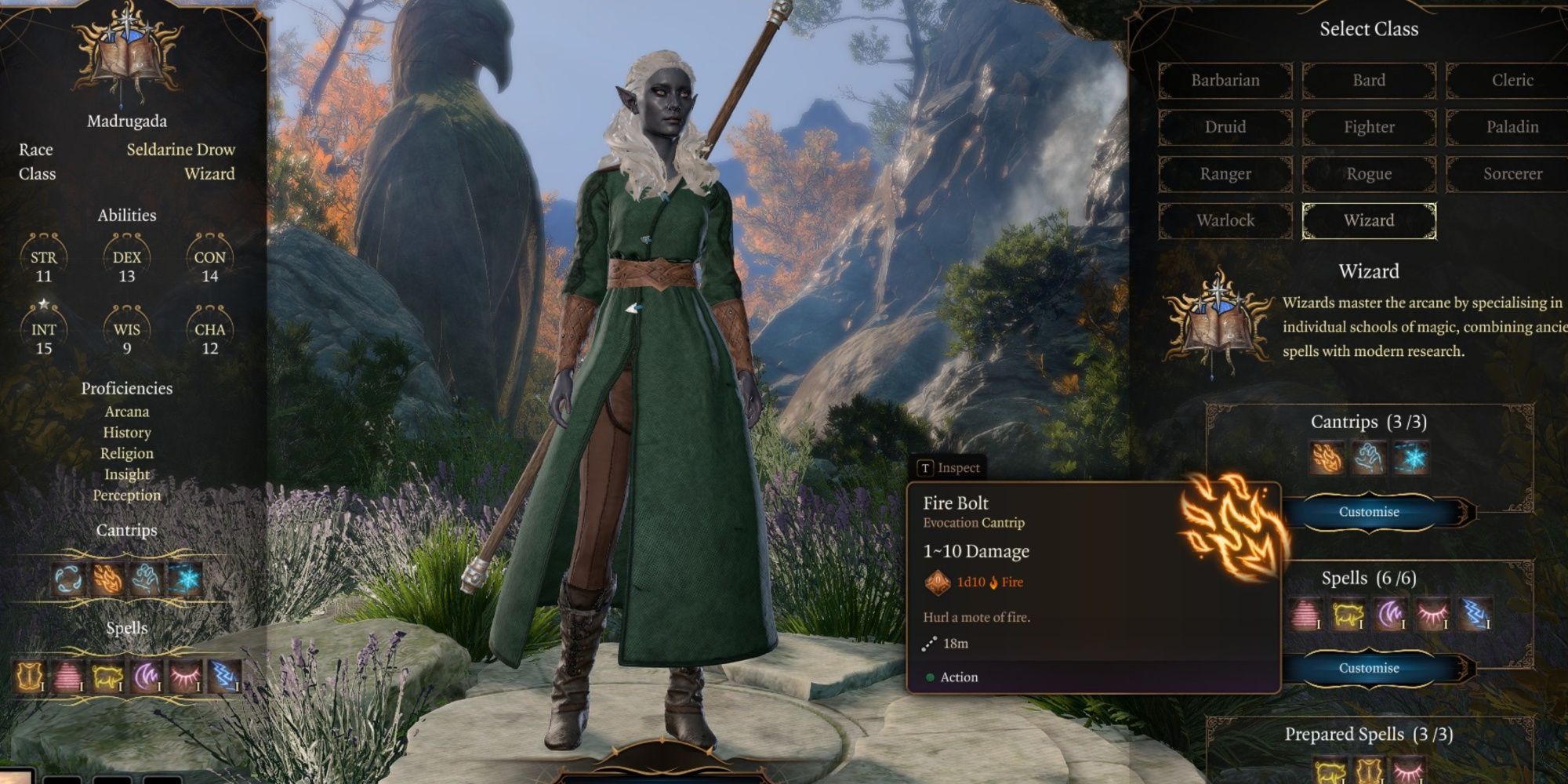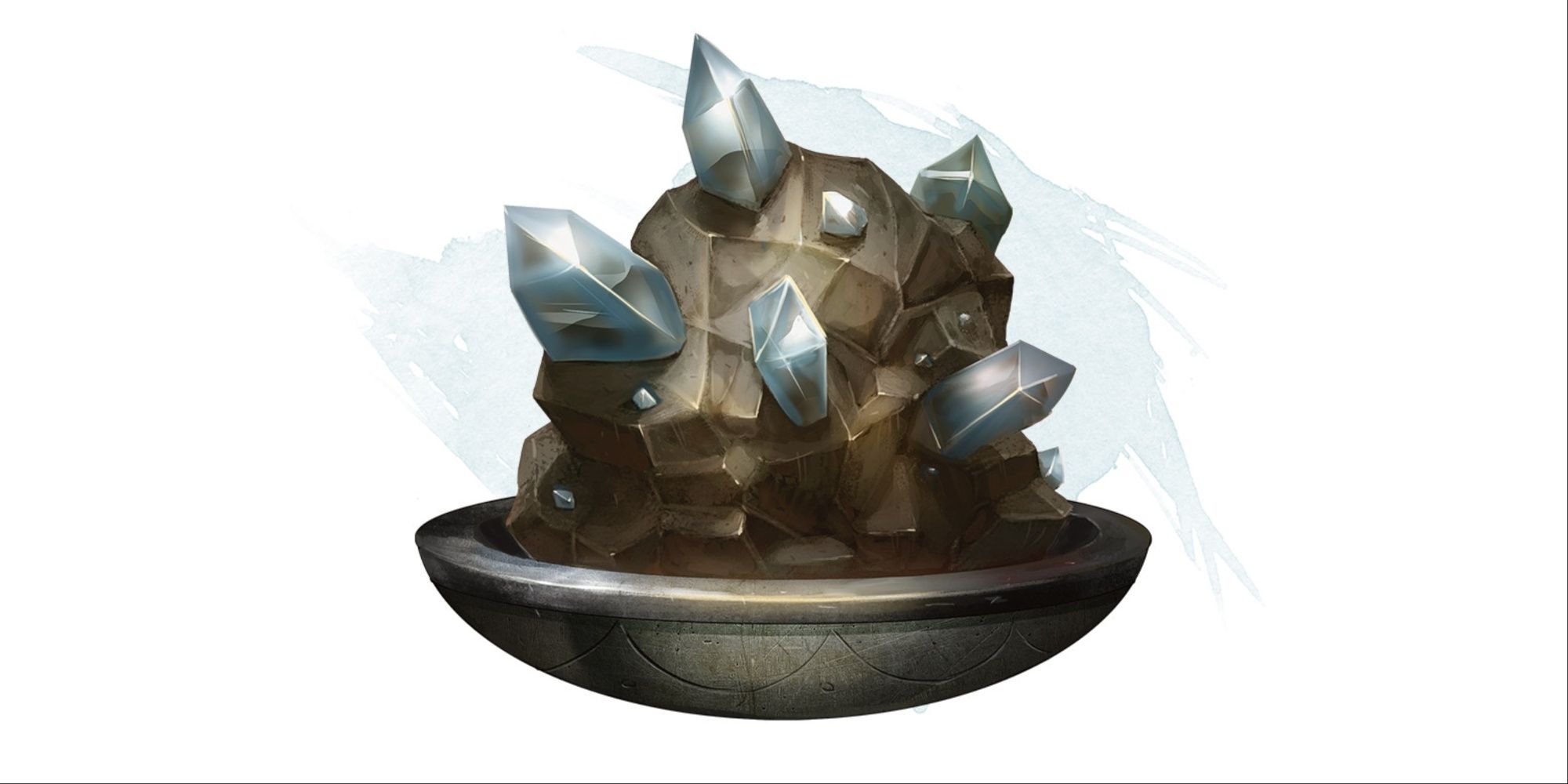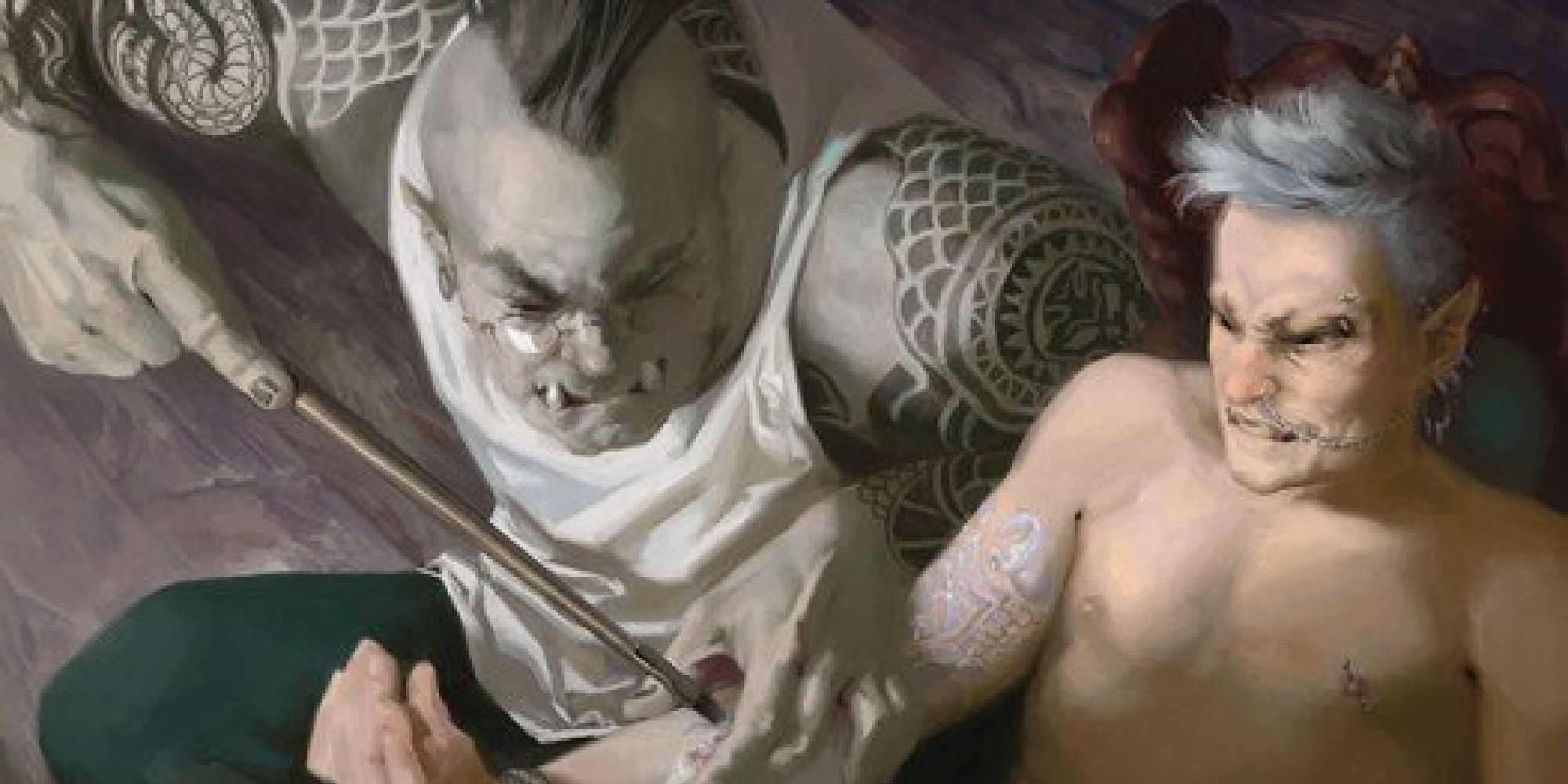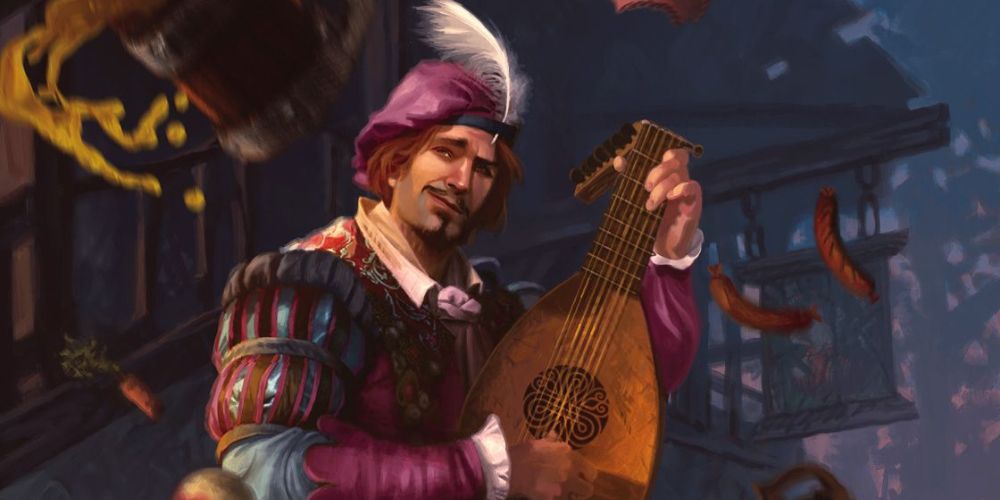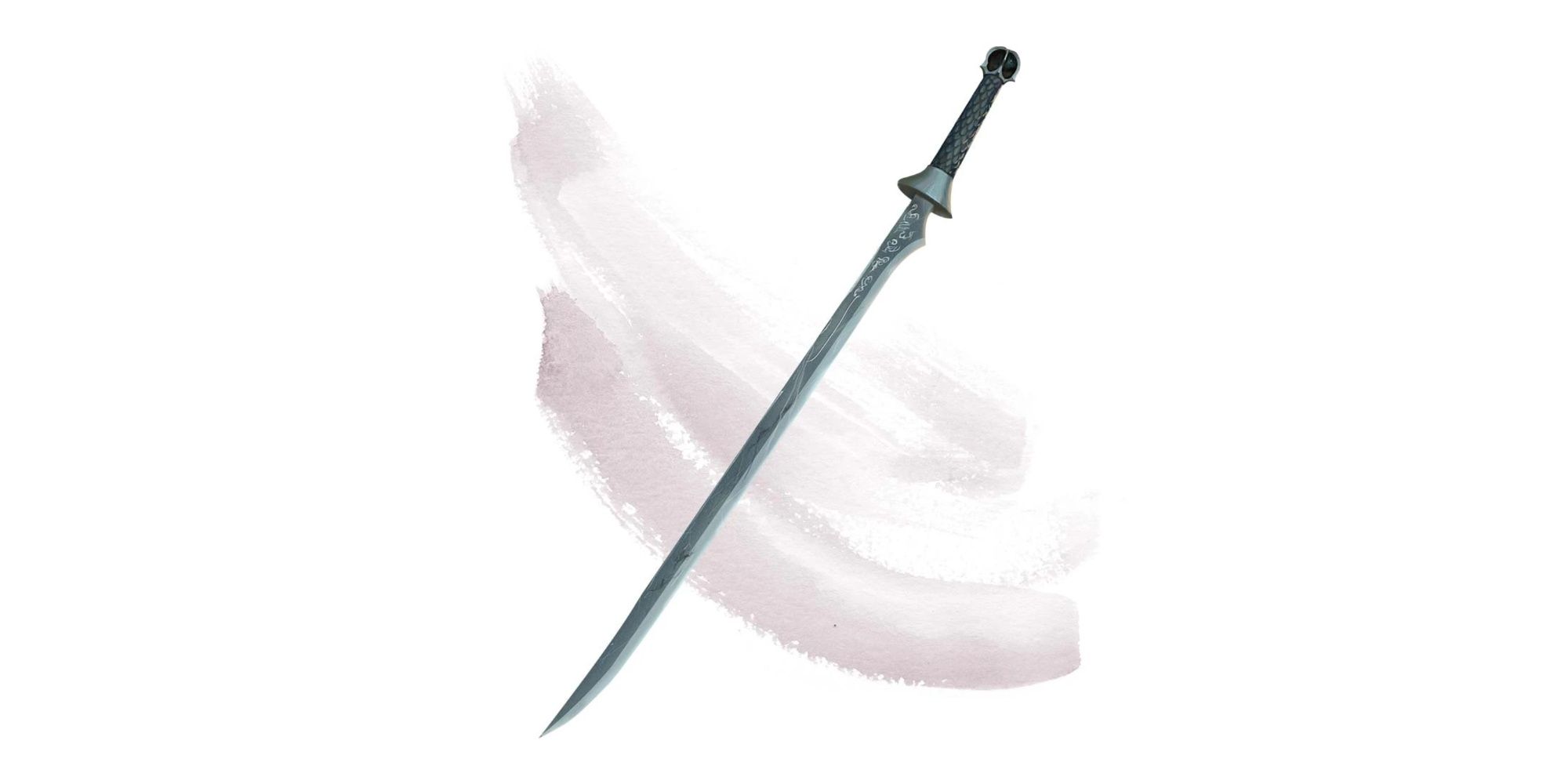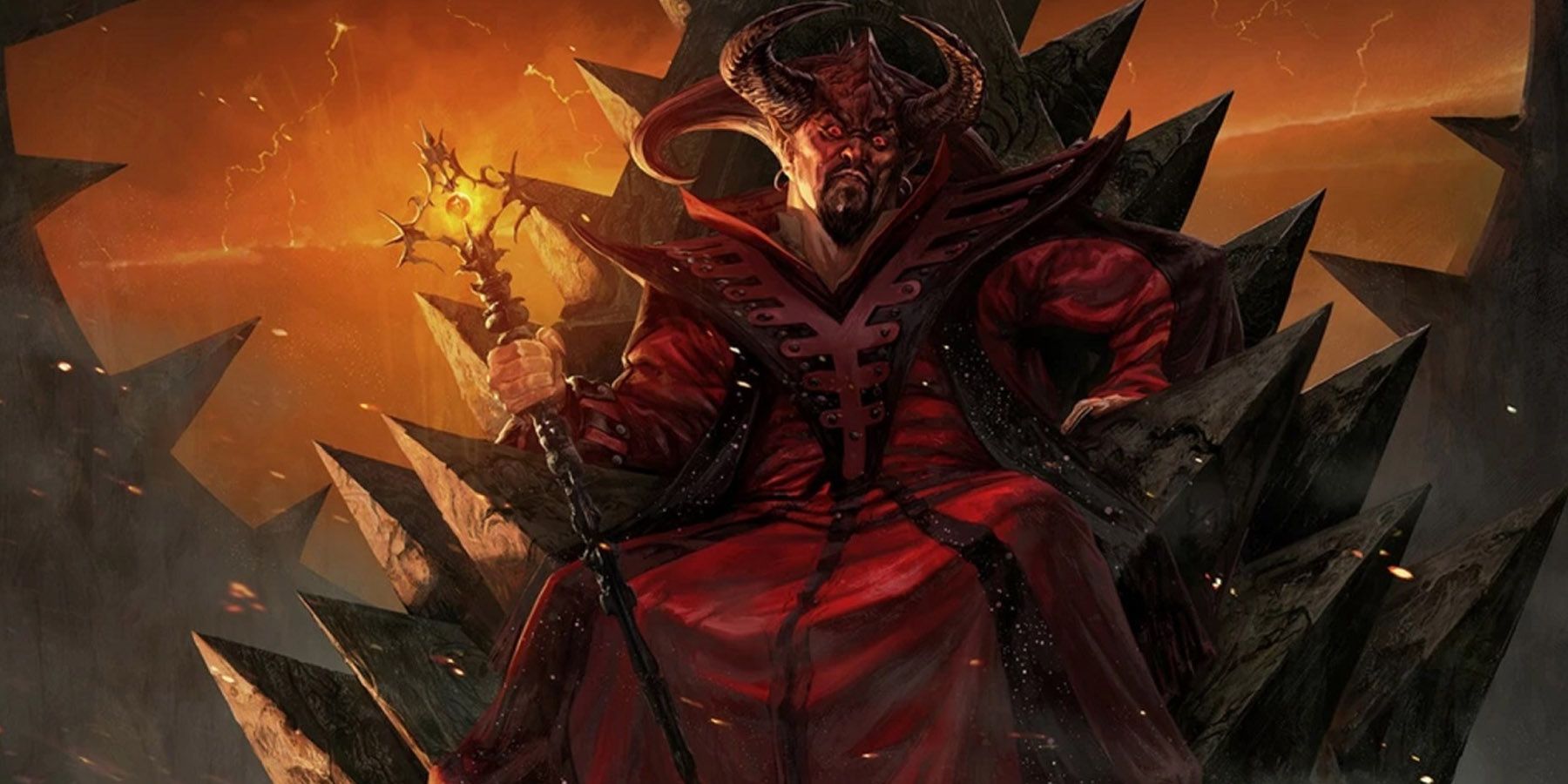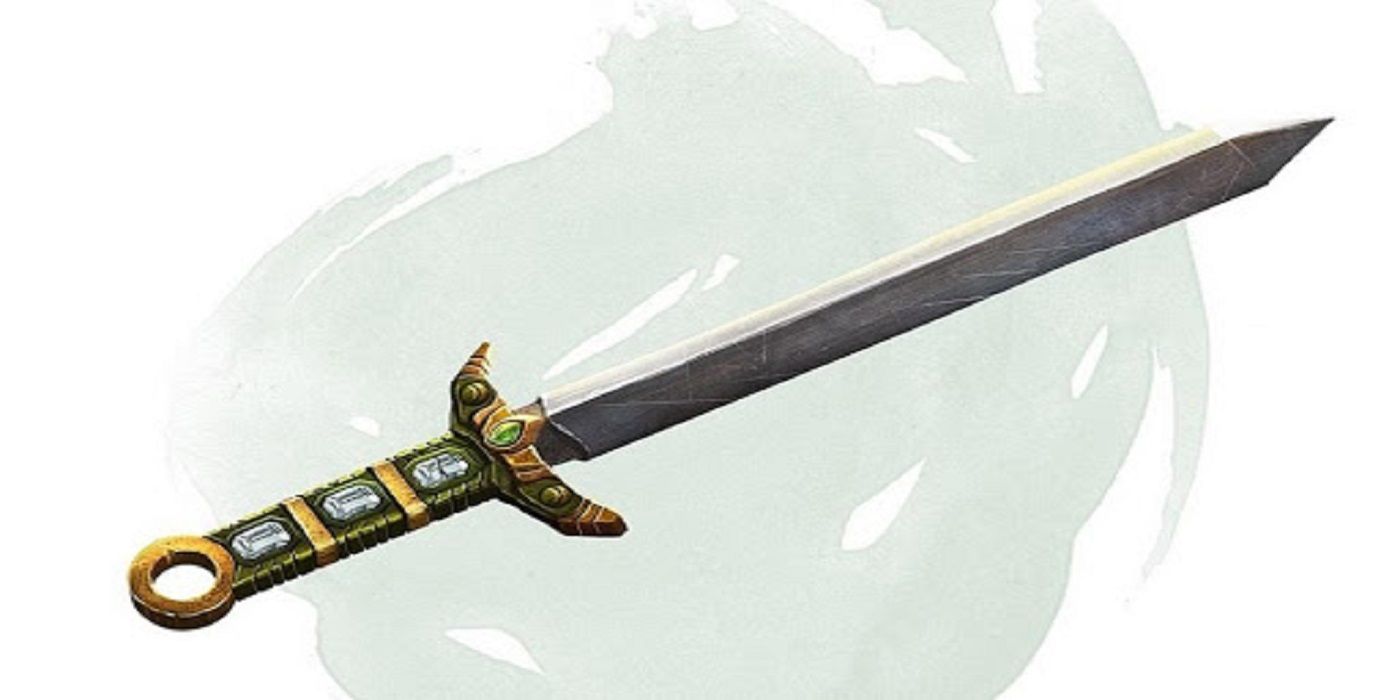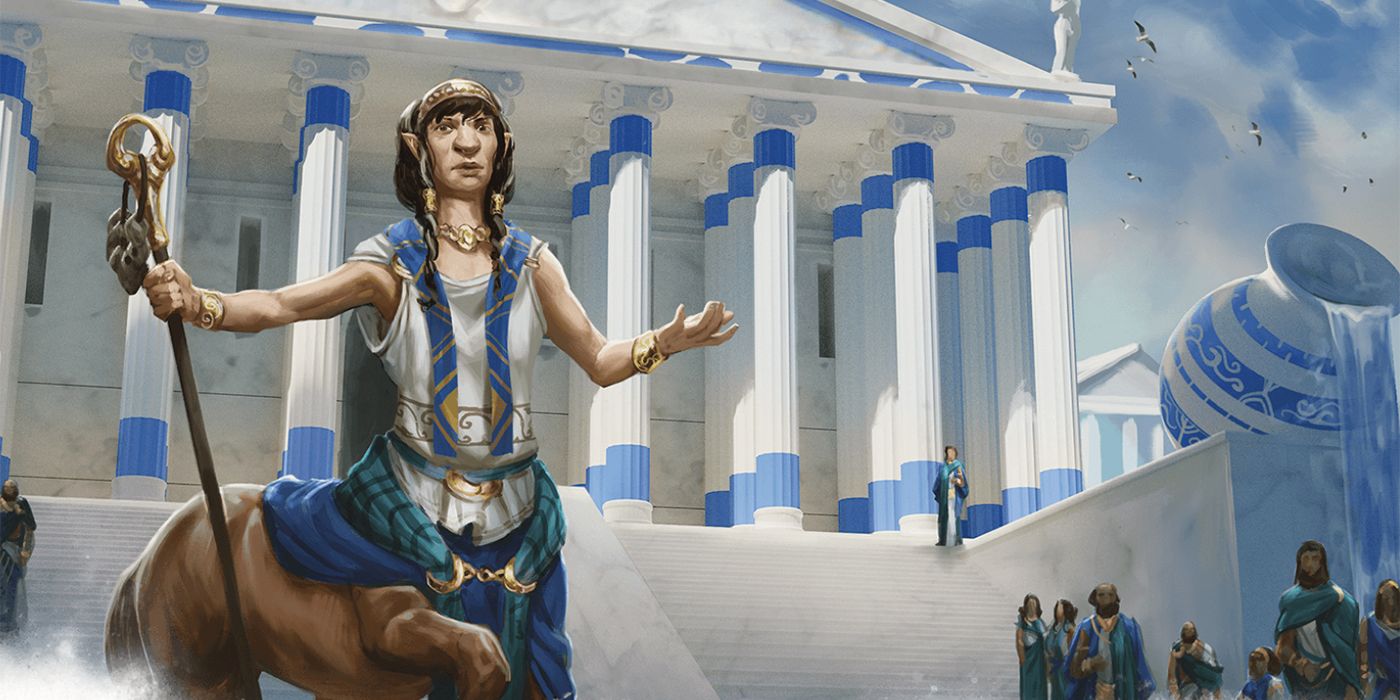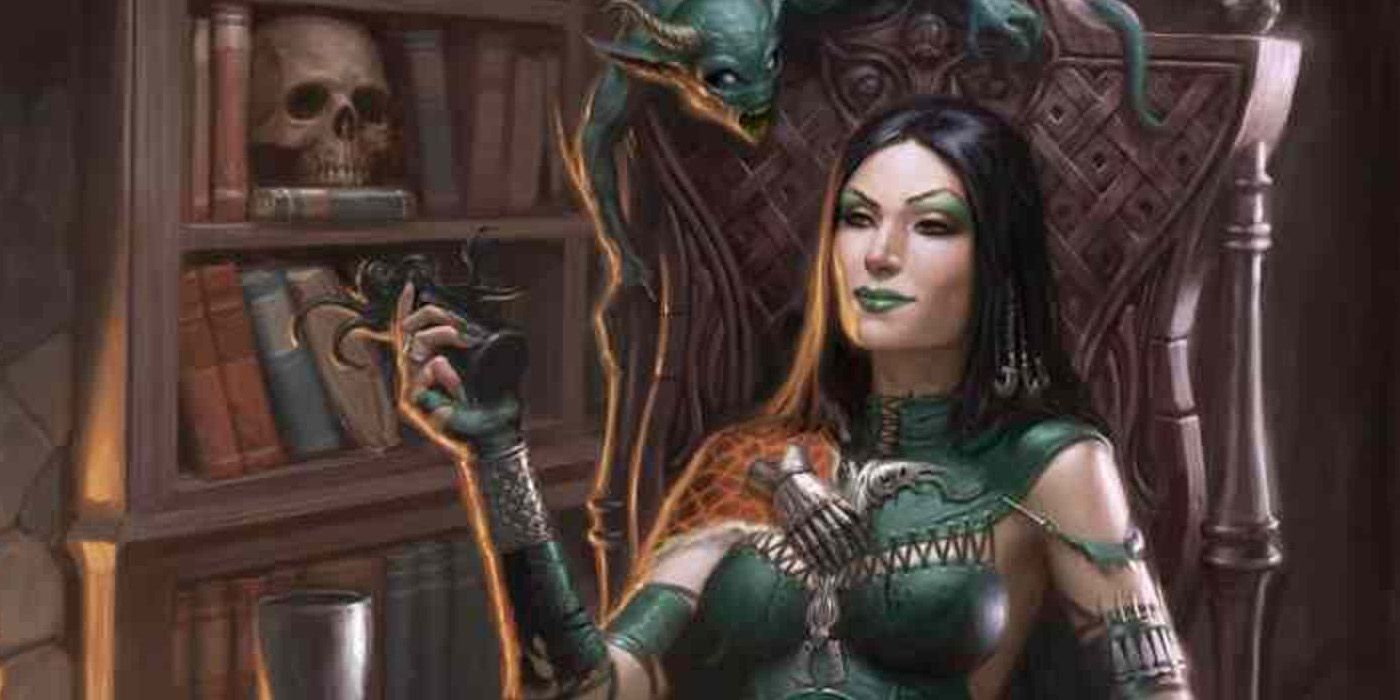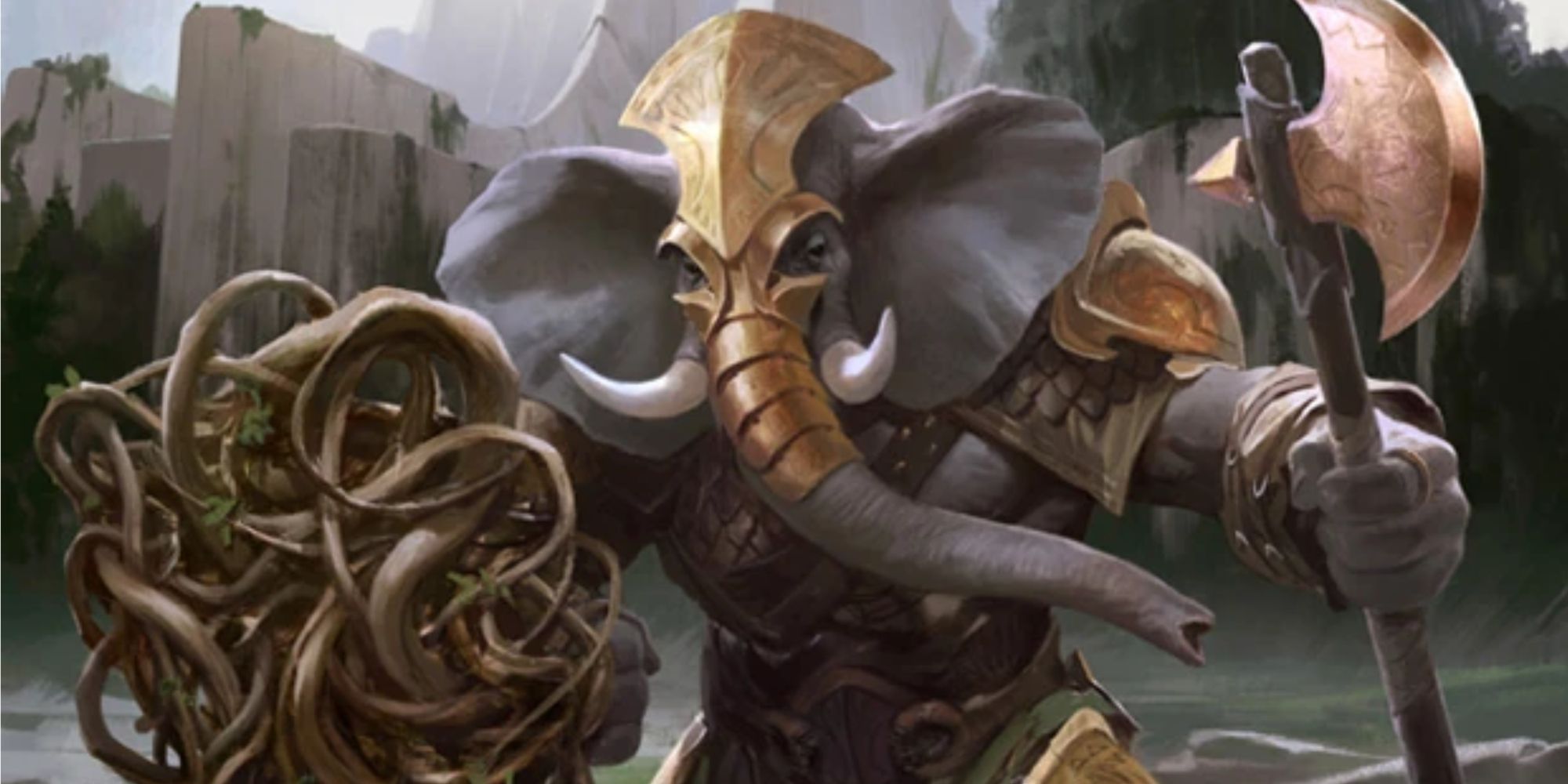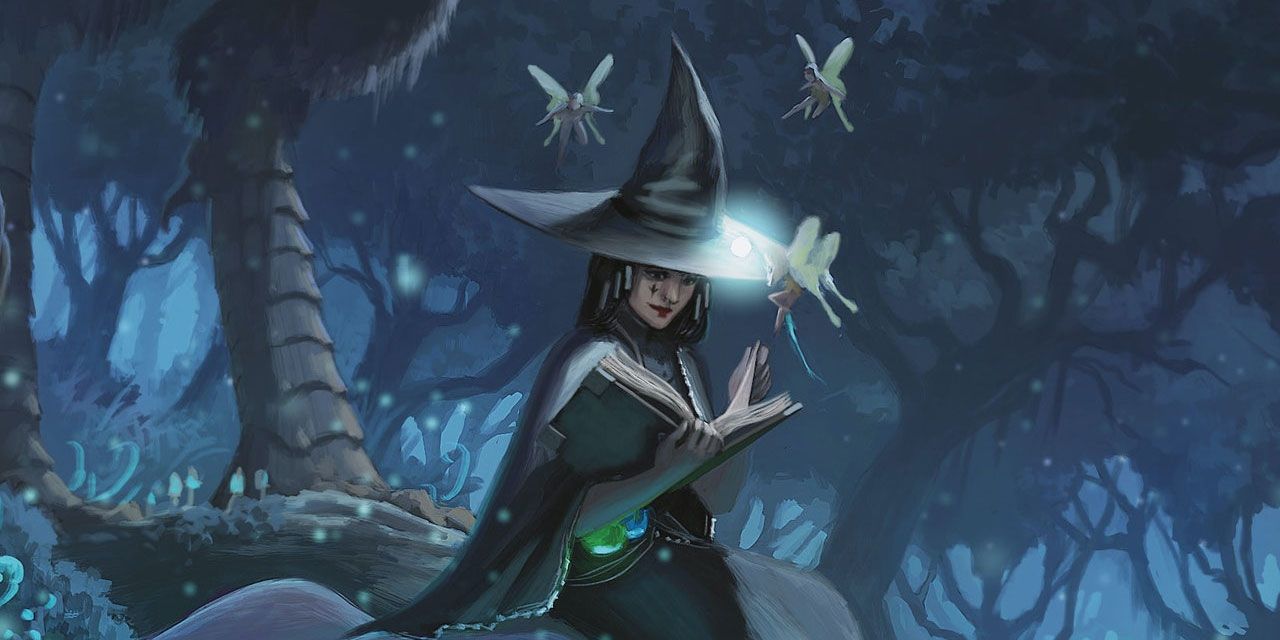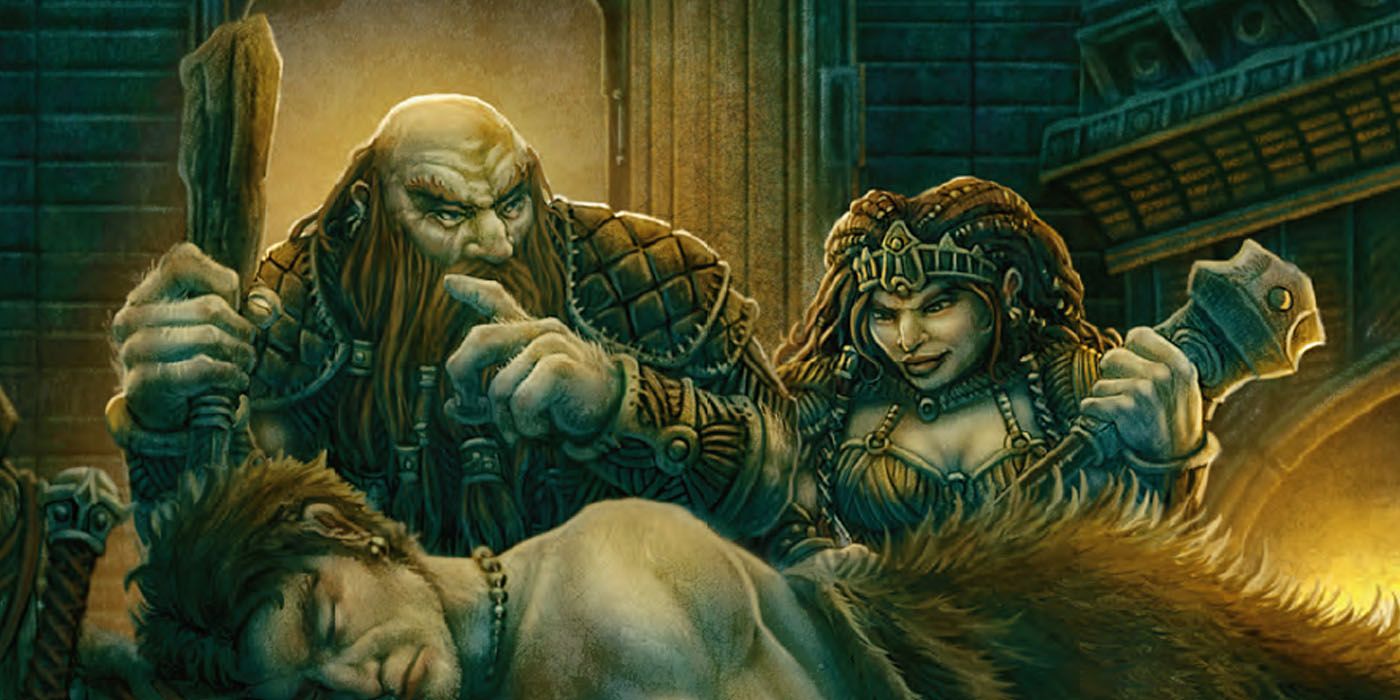The wide appeal of Dungeons & Dragons is partly because of the customizable characters. Players are always looking for some extra goodies on the side for that one unique build they've created. There's something for every class in that hoard, including plenty for the Bard.
The Bard is a support or healing class, and it's also possible to build them as melee or spellcasting damage depending on what gear you give them. To that end, these are some of the magical items for Bards in the D&D 5th edition that players will want to equip at some point in their adventures.

Dungeons & Dragons: Best Magic Items for Rogues
For dungeon masters and players looking to outfit a Rogue, here are the best magical items for them in Dungeons & Dragons 5th edition.
Updated on June 27th, 2024, by Kristy Ambrose: In D&D 5e, a Bard can be anything from a pirate to a politician, depending on their skills, abilities, and designated party role. A new 2024 subclass, the College of Dance, introduces yet another possibility for the class that's known for crowd control. Building a Bard in D&D isn't just about the entertainer in the tavern or the busker on the street. Players have built everything from college professors to cult entertainers with this versatile class.
Musical Instruments
A Bard's Primary Weapon
The Bard is usually known by the instrument that they carry, and this is often used as a focus for spellcasting. Bards have a reputation for being a healing class that also buffs the party, but other builds can make the Rogue into a damage-dealing class.
Reveler's Concertina
- Source: Tasha's Cauldron of Everything
- Item Rarity: Uncommon to Legendary
- Modifiers: Gives a +2 bonus to all of the Bard's casting saving throws and grants the use of Otto's Irresistible Dance one per day.
It's something like an accordion, for those that might not be familiar with the concertina, and the modifiers apply anytime the Bard is holding it. They don't have to be playing the Reveler's Concertina for the bonus, and the extra spell is also handy.

Baldur's Gate 3: Best Bard Class Build
Fans who intend on playing as a Bard in Baldur's Gate 3 will find everything they want to know right here.
As the name implies, Otto's Irresistible Dance is used for crowd control. It affects a single target, which has to use all of its energy to dance for up to a minute, which gives it a disadvantage on all saving throws.
The Merry Shorthorn
- Source: Icewind Dale video game series
- Item Rarity: Unknown
- Modifiers: Cast Bless on allied creatures once a day.
This rare and wonderful item is unique to the Icewind Dale video game series, but it's an official part of the D&D universe and could be imported into any game that uses 3rd or 5th-edition rules. There's a story told in Icewind Dale about a Bard named Prophia Copperfire, and she traveled the length and breadth of northwest Faerun with this little flute.
Some legends say that she even went to Elysium and the Elemental Planes, playing the Merry Shorthorn all the way. Despite its long and storied history, it only has the minor power of giving the Bard that carries it the Bless ability once a day, but that could make it an ideal weapon for a low-level Bard early in the campaign.
Instruments of the Bard
- Source: Dungeon Master's Guide and Xanathar's Guide to Everything
- Item Rarity: Uncommon to Legendary
- Modifiers: Use an Action to play the instrument and cast 1 of its spells once a day.
Instruments of the Bard are designed with bards alone in mind, and they'll amplify the already considerable arcane powers that come with their musical ability, so they're one of the best magical items any Bard can have. Seven Instruments of the Bard exist, some that are rarer than others.
All of these instruments give the Bard the ability to cast many useful abilities, though once the instrument has been used to cast a spell, it can't be used again until the next day. On top of that, each instrument subtype has its own unique list of spells.
Some, like the cittern or the mandolin, come with the ability to cast Cure Wounds, among a couple of other spells, while the lyre can create walls of wind and fire, and the lute can protect from energy and poison. The most powerful of the instruments is the Legendary Ollamh harp, which can cast Confusion, Control Weather, and Fire Storm.
Pipes of Haunting
- Source:Dungeon Master's Guide
- Item Rarity: Uncommon
- Modifiers: Each creature must succeed on a DC 15 Wisdom saving throw or become Frightened for one minute.
It's not the most thrilling or precious thing that players will come across, but this magical item for a Bard possesses a handy magical ability, doesn't require attunement, and can be crafted by a level 6 Artificer. The Pipes Of Haunting aren't exactly hard to find, although acquiring them might depend on the kindness of the DM.
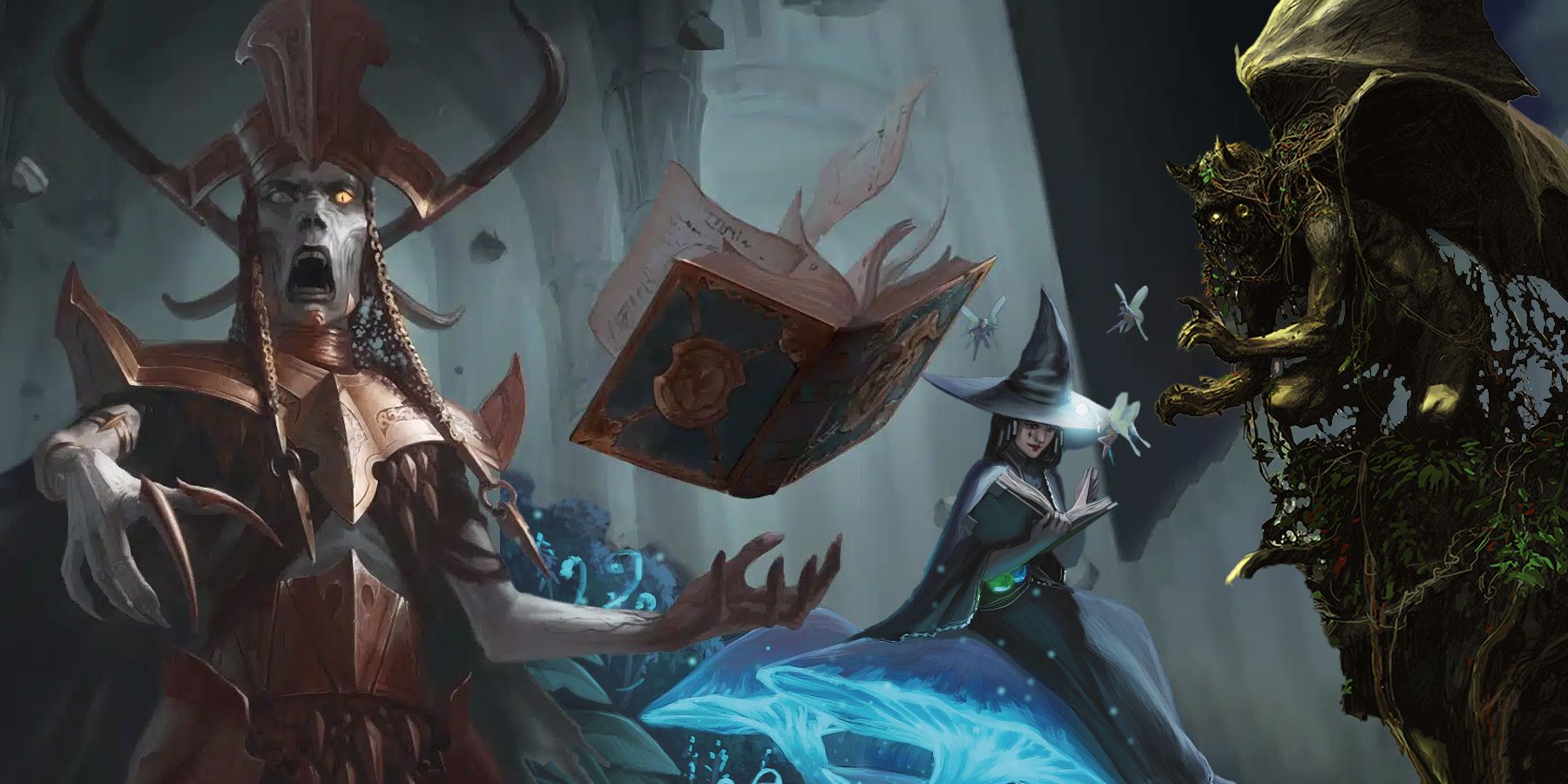
Dungeons & Dragons: 24 Best Necromancy Spells In 5e
Necromancers can be an incredible asset to any D&D party. Every Necromancer should know at least some of these 5e spells.
Upon playing the pipes, the eerie tune casts a spell that covers every creature within a 30-foot radius of the caster. It should be noted that creatures who can resist this musical magic become immune to its effects for 24 hours, so be wary when casting this spell on creatures with high Wisdom.
The Rhythm-Maker's Drum
- Source: Tasha's Cauldron of Everything
- Item Rarity: Uncommon to Very Rare
- Modifiers: Bonuses to attack rolls and saving throws, exactly how much is determined by the quality level.
Not enough Bards carry percussion instruments, but a drum is just as portable as a flute or a banjo, so why not? Attuning with the drum and equipping it gives a bonus depending on how rare the item is, and that's entirely up to the Dungeon Master.
Any improvement to casting or attack ability is one of the best enhancements to magical abilities a Bard can have. Another handy use is the ability to use the drum with one Action to restore the character's Bardic Inspiration. This can only be used once a day and restores itself at dawn.
Accessories And Jewelry
Extra Protection And Enhanced Abilities
Bards generally wear medium armor but depending on the build, spellcasters or healers might just stay in something lighter. Luckily there are other ways to boost that AC for Bards that opt for something lighter for their unique build.
Deck of Illusions
- Source: Affordable Arcana - Wondrous Items
- Item Rarity: Uncommon
- Modifiers: Draw a card at random and throw it to the ground, and a major image of a creature is formed. The figment lasts until dispelled.
With a Deck of Illusions up their sleeve, the Bard using them could very well take control of an entire combat encounter. With the full deck, which is a pack of 34 parchment cards, and by drawing a card at random before throwing it to the ground within 30 feet of the user, the action will result in a variant illusory effect.
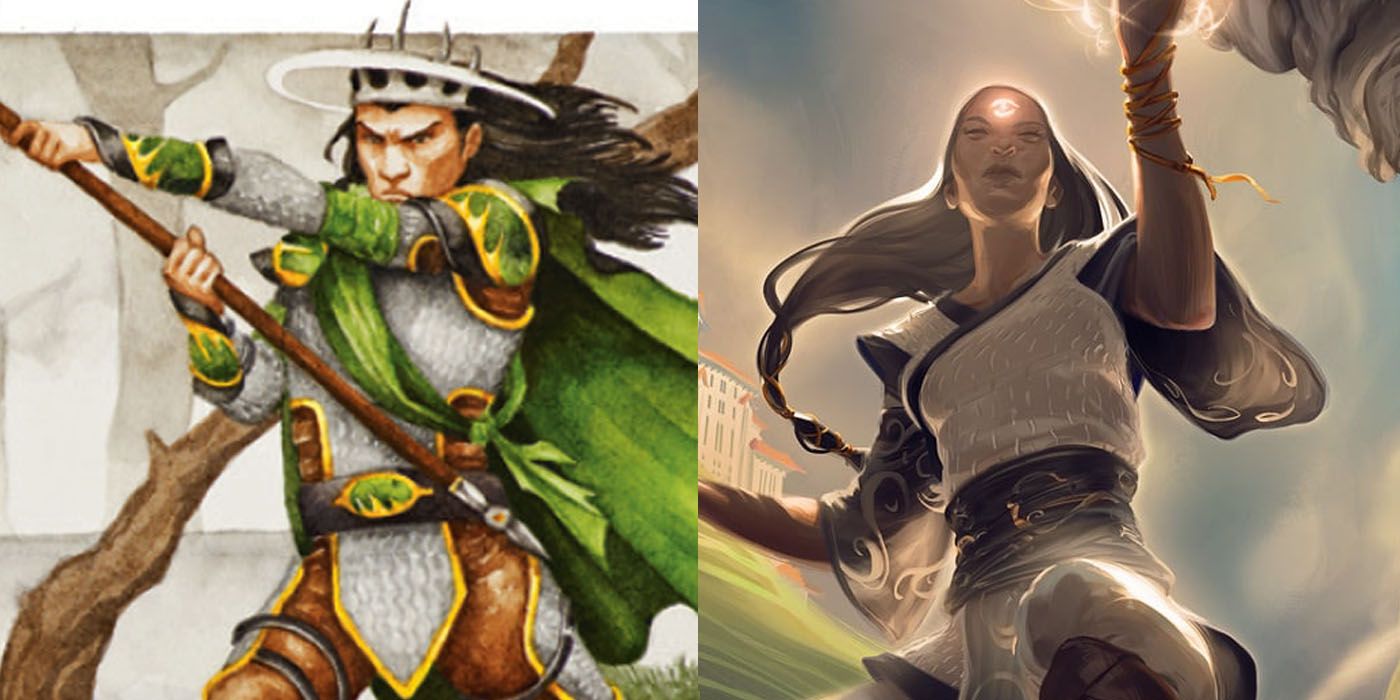
Dungeons & Dragons: 15 Best Enchantment Spells In 5e
Enchantment spells might not be the flashiest out there, but they're invaluable in certain situations. These 5e spells stand out as the best.
Depending on the card drawn, the Bard might summon anything from a beholder to an entire illusory red dragon. The illusion can then be moved around to make it lifelike, though, of course, any creature that comes into contact with it will discover its true nature. The deck doesn't require attunement, so it's another great magical item for the Bard to have in a pinch. Summoning fake, weird monsters to the battlefield to confuse enemies? That's right in a Bard's wheelhouse.
Alchemy Jug
- Source: Dungeon Master's Guide
- Item Rarity: Uncommon
- Modifiers: Make ten different liquids for various uses.
A variety of classes would be able to make good use of the handy Alchemy Jug, but the versatile Bard has the kind of creative or performative mind that suits its purpose. As an Entertainer, the Bard can use this jug to generate servings of wine or beer, and other substances like vinegar and oil can also be handy if a mess needs cleaning or a fire needs starting.
Other handy liquids the Alchemy Jug can produce include mayonnaise, acid, poison, and salt or freshwater. The jug is a hefty 12 pounds regardless of whether or not it's in use, and once the Bard decides what it's going to be full of, they can't change their mind until the following dawn.
Ring of Spell Storing
- Source: Dungeon Master's Guide
- Item Rarity: Rare
- Modifiers: Contains up to 5 levels of spells, either divine or arcane, or even a mix of both spell types, that the wearer can cast without needing rest or material components.
The Ring of Spell Storing, as the name implies, stores spells that are cast into it, so up to 5 levels' worth of spells can fit in the ring at a time. Any creature can cast a spell between the levels of one and five into the ring, and whoever is wearing it will be able to cast those spells with the same slot level, spell save DC, spell attack bonus, and spellcasting ability of the original caster.

Dungeons and Dragons: Best Feats For Wizards
These feats are guaranteed to give every Wizard the edge they need in any D&D campaign.
That opens up a world of possibilities for the Bard who uses this ring, as the stored spells don't have to be theirs, making it one of the best magical items for the Bard. Another spellcaster in the party, even divine casters like the Cleric, could provide the bard with spells that they wouldn't otherwise get access to, expanding the Bard's utility in battle.
Stone of Controlling Earth Elementals
- Source: Basic Rulebook
- Item Rarity: Rare
- Modifiers: Speak a command word to summon an Earth Elemental under the Bard's command.
The Bard has a limited number of spell slots compared to other classes and could use some help in the extra magical abilities category. Elementals are nice to have around, and earth elementals can act as a great defense for a squishy Bard.
There are a few caveats to using the Stone of Controlling Earth Elementals successfully, such as touching the stone while it's on the ground when saying the command word. If the player happens to be enjoying a campaign on the high seas, it might not be as useful as a magical item.
Ghost Tattoo
- Source: Tasha's Cauldron of Everything
- Item Rarity: Very Rare
- Modifiers: Resistance to bludgeoning, piercing, and slashing damage from non-magical attacks, immune to being grappled or restrained, able to move through creatures and solid objects as if they were difficult terrain.
A fairly new addition to the world of D&D, the Ghost Tattoo is handy for any class or build that's on the squishy side, using no or light armor, and dealing with a low AC. Any healer or spellcasting class can also make use of the stylish and unique Ghost Tattoo.
Three times a day, the wearer can use one charge of the tattoo to invoke a condition called Ghostly Form. This makes them resistant to virtually all non-magical weapon attacks, they can't be restrained or grappled, and they can move through solid matter as if it were the same as difficult terrain.
This is considered a condition as opposed to a spell, so it doesn't require concentration, another bonus if you need to cast another spell.
Stone of Good Luck
- Source: Dungeon Master's Guide
- Item Rarity: Uncommon
- Modifiers: Keep on one's person to gain a +1 bonus to Saving Throws and Ability Checks
Also known as the Luckstone, it should be pretty obvious why a Bard, or any other character, might want this item in a tight spot. When attuned, the holder of a Luckstone will get a +1 bonus to ability checks and saving throws. This one item just makes all of the Bard's many abilities and skills a little more doable regardless of the situation.

19 Pro Tips To Create A Cyberpunk D&D Campaign
While waiting for Cyberpunk 2077 to be released, here are 10 tips for putting together a cyberpunk Dungeons & Dragons campaign.
Beyond those items, anything that extends a bard's Charisma-based abilities is great to have, since Charisma is their top stat. Bards are masters of charm and magical manipulation, so a magical item that packs a little more into the Bard's punch is worth taking from the party loot pile.
So long as D&D 5th edition players know their character's strengths and weaknesses, they can pick out all of the magical items that complement their build, and compensate as needed.
Weapons
Finesse, Light, Thrown, And Ranged
Other than healing and buffing, Bards need a weapon other than the musical instrument they're playing. Light or finesse weapons are ideal for the Bard, which is why you'll often see them wearing daggers, shortswords, or rapiers.
For those who want to focus on ranged power, the class is proficient in light and hand-crossbows, and those who chose certain races, like Elves or Half-elves, can also use short bows.
Moonblade
- Source: Dungeon Master's Guide
- Item Rarity: Legendary
- Modifiers: Physical damage of 1d6+ the number of previous owners, one other special property determined by a 1d100 roll.
A Moonblade is deeply tied to the Elf species, made by their skilled hands, enchanted by their most skilled mages, and passed from one generation to the next. The wielder doesn't have to be an Elf, but the sword can reject them if they work against the good of elven kind in any way.
Should a Moonbalde accept you as its master, it becomes attuned to the character, and its name appears as a rune on the blade along with the previous owners. The DM will roll 1d100 to determine whatever random properties the sword will have, other than the standard 1d6+the number of masters it has served, for damage.
There are many possibilities here, but some examples include improving the physical damage, giving the Moonblade the finesse quality or the thrown ability, or even the properties of a Vorpal Sword.
The Sun Blade
- Source: D&D Player's Handbook
- Item Rarity: Rare
- Modifiers: +2 to attack and damage rolls. Emits sunlight for a 15-foot radius and dim light for another 15 feet.
In keeping with the aesthetic of the Bard as a trickster, this weapon looks like nothing more than an incomplete longsword hilt to the untrained eye. However, the character wielding it can use an Action to ignite its blade. This blade is made of pure sunlight, and therefore does light damage as opposed to slashing damage.
The Sun Blade is considered a finesse weapon. This is another reason it's ideal for the Bard, provided they can use shortswords or longswords. The Bard needs to use another Action to extinguish the blade and put the sword away.
Blast Scepter
- Source: Waterdeep: Dungeon of the Mad Mage
- Item Rarity: Very Rare
- Modifiers: Gain resistance to fire and lightning damage and use an Action to cast Thunderwave as a 4th-level spell
Every arcane caster needs an arcane focus to go with. Usually, a character's focus isn't something the player needs to think about much. It's normally a simple matter of creating the character and declaring that they've got a special crystal or wand to serve as a conduit for the character's magic. After that, the focus is set.
However, should a Bard wander into the dungeon of Undermountain and pick up a Blast Scepter, they could take their arcane focus game to the next level. The Blast Scepter can serve as an arcane focus, and while a character is attuned to it, they'll get resistance to fire and lightning damage. That's an incredibly handy magical item for the Bard to have equipped regardless of build.
The Luck Blade
- Source: D&D Player's Handbook
- Item Rarity: Legendary
- Modifiers: +1 to saving throws while equipped, +1 to damage and attack roles in combat, the two abilies of Luck and Wish.
The Luck Blade comes in a variety of forms, including scimitar, rapier, longsword, and short sword. Each is considered a martial melee weapon and has slightly different modifiers, but the ultimate choice is up to the Dungeon master.
The item's Luck ability can be used to reroll a failed ability check, attack roll, or saving throw. This power regenerates with the next sunrise. The character that equips the sword can also cast the Wish spell once a day, provided they are holding the sword and have an Action to use.

Bard Changes in One D&D Explained
One D&D's playtest overhauled the Bard, with updates to its spellcasting and Bardic Inspiration features alongside the addition of a new subclass.
The Flail of Tiamat
- Source: Fizban's Treasury of Dragons
- Item Rarity: Legendary
- Modifiers: +3 to every attack, the target takes an extra 5d4 of acid, cold, fire, lightning, or poison on hit, and the heads can breathe fire on command.
This is truly a weapon of Legendary quality. The Flail of Tiamat is named for the mother of all dragons, but she's also considered to be a demi-god and a powerful devil, and this weapon is made in her likeness. It has five heads, one representing each of the dragon colors, and does damage according to their elemental powers.
In addition to the attack bonus and being able to deal virtually any kind of magical damage possible, the Bard can also use a command word to get the heads of the flail to breathe fire. This creates an AoE effect in cone-form in front of the caster, again in the elemental form of their choice, and any living thing caught in the line of fire has to make a Dexterity saving throw and take 14d6 damage if they fail.
Clothing and Armor
For Protection And Glamor
Cloth and leather are the most that most Bards will wear when it comes to their armor class, and although 5e gives players more leeway in this regard, most Bards can't wear anything heavier that won't impede their casting abilities. For Bards that focus on physical damage, the choices might be different.
Cloak of Many Fashions
- Source: Xanathar's Guide to Everything
- Item Rarity: Common
- Modifiers: Use a Bonus Action to change the style, color, and quality of the cloak
This is one of the best magical items for a Bard starting at lower levels. It's listed as a "common" wondrous item, so it shouldn't be too hard for the Bard to find. The Cloak of Many Fashions doesn't require attunement, and it allows the wearer to use a bonus action to change the style, color, and apparent quality of the cloak.
This magical item for the Bard is more limited than other disguise garments in that it can't be anything other than a cloak, but there's still plenty a clever enough Bard with a high enough Charisma could do while roleplaying with this item.
Because it doesn't take up an attunement slot, this can be used in a hurry even when the Bard is using all their slots to attune to other items unlike the more powerful Hat of Disguise, which casts the Disguise Self spell but needs attuning to do so.
Glamoured Studded Leather
- Source: Dungeon Master's Guide
- Item Rarity: Rare
- Modifiers: +1 bonus to AC, plus use a Bonus Action to make this armor appear as normal clothing
Generally, Bards in any D&D subclass can wear some armor. Nothing too heavy, but a little extra protection. To that end, a suit of Glamoured Studded Leather is one of the best magical items for the Bard. The armor grants a +1 bonus to AC, and the wearer can use a bonus action to have the armor take on the appearance of another type of armor or normal clothing.

Video Games To Play If You Love Dungeons & Dragons
Dungeons & Dragons inspired countless CRPGs over the years, but which games should a fan of the Tabletop franchise try?
The armor still weighs the same, as the effect is illusory, but it's great for disguises. Adding in the fact that the armor's uses are unlimited and that it doesn't require attunement, this is a good magical item that players with Bards should keep their eyes out for.
Bracers of Defense
- Source: Basic Rulebook
- Item Rarity: Rare
- Modifiers: Improves the Bard's AC by +2.
The Bard class is restricted to Light Armor, which is typical of a casting class, so no matter what species or college a player has chosen, they'll always be looking for ways to improve their character's armor class. These will add a bonus of 2 to the Bard's AC, but it might not stack with other gear that has similar magical properties.
On the other hand, the Bracers of Defense won't be affected by or interfere with spells that buff the character in a similar way, like Bless or Shield of Faith. The Bracers of Defense are high on the list of essentials when it comes to gear for all casting classes, and depending on the campaign and the DM, there might be stronger versions of better quality available.
Cloak of Invisibility
- Source: Dungeon Master's Guide
- Item Rarity: Legendary
- Modifiers: Use an Action to become invisible.
An ideal accessory for any class that doesn't wear a lot of armor, it's especially nice for squishy spellcasting classes that also have a Sleight of Hand proficiency. Not only does the Cloak of Invisibility protect a Bard in combat situations, but it can also be used for stealth and thievery should the need arise.
Once the cloak is first activated when the wearer puts the hood up, it has a total of two hours of invisible time left. Putting the hood down cancels the effect but it won't restore the time until the player's next long rest, so keep counting the minutes to avoid an embarrassing wardrobe malfunction.
Helm of Brilliance
- Source: D&D 5th Edition
- Item Rarity: Very Rare
- Modifiers: A wide and creative variety depending on how many jewels, and of what kind, adorn the crown.
The Helm of Brilliance is one of the most useful items for casters and also one of the best magical items for Bards specifically. Its adornments include 10 diamonds, 20 rubies, 30 fire opals, and 40 opals.
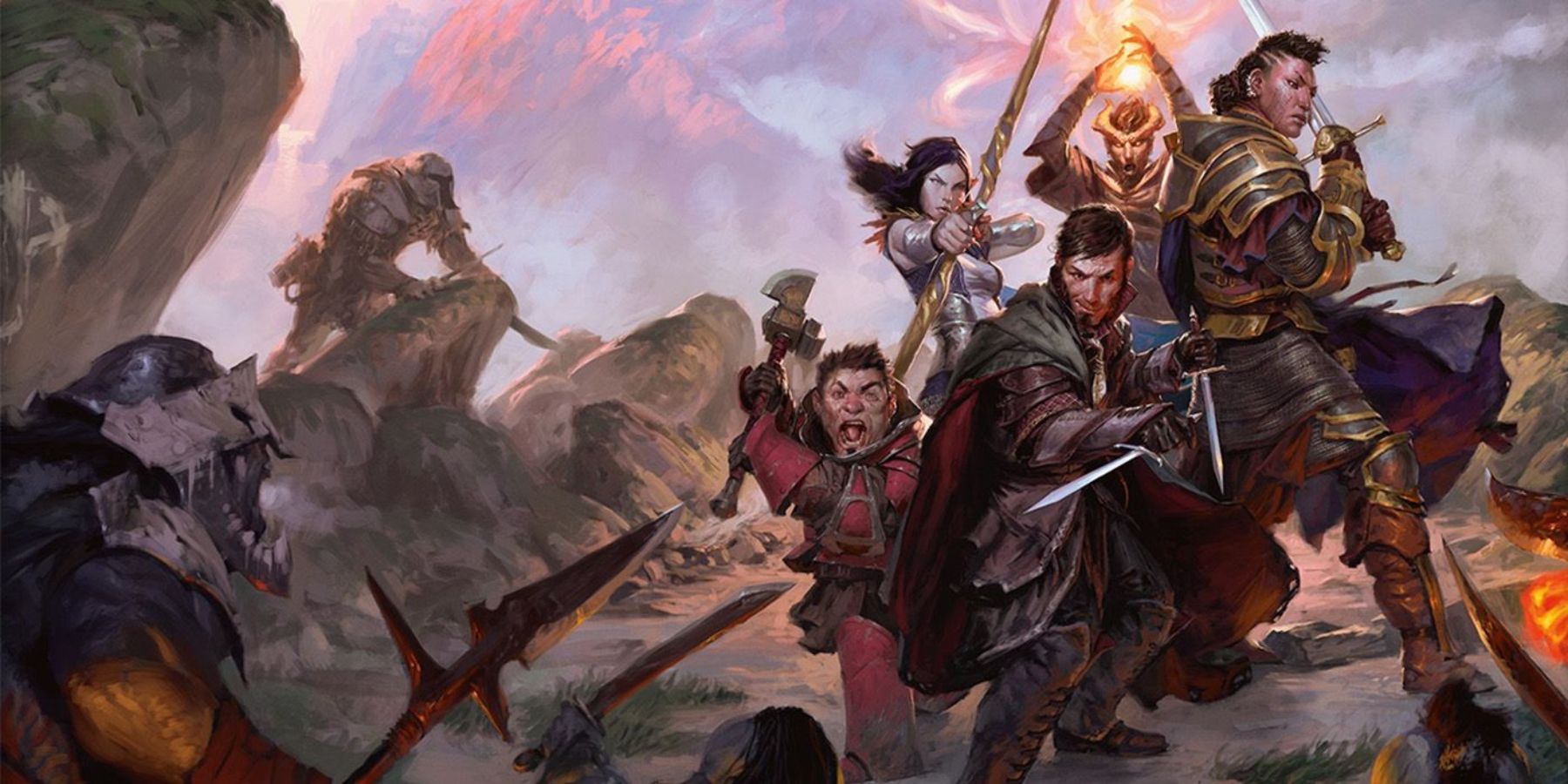
Dungeons & Dragons: The 14 Best Weapons For Bards (& Where They're Usually Found)
Though Bards aren't known for being a fighting class, they can still utilize a variety of useful weapons...if players can find them.
The catch is that the power of the gems is what grants the helm its spellcasting power, and every time the Bard uses one of these powers, one of the gems fades away. There are 10 charges of Prismatic Spray for every diamond in the helm. Other spells include Daylight for the opals, Fireball for the fire opals, and Wall of Fire for the rubies.
Any gem removed from the helm turns to dust, and if all the gems are removed from the crown, it loses its magical power. Aside from the spellcasting powers attached to the gems, the helm has several other handy uses. The diamonds will glow if there are any Undead creatures within a 30-foot radius, rubies grant fire resistance and add fire damage to the Bard's main weapon.
Gloves of Thievery
- Source: Dungeon Master's Guide
- Item Rarity: Uncommon
- Modifiers: Increases skill at picking locks and pickpocketing
Bards may not be the equivalent of a Rogue, it's true, but in the absence of a party rogue, or in the case that the rogue is busy for whatever reason, a bard can make a pretty great substitute. They're designed to be the jack-of-all-trades class, and that generally allows bards to use their abilities and subclass to fill in whatever holes the party has in terms of skills.
Thus, a Bard might need some Gloves of Thievery. These gloves grant the wearer a +5 bonus to Sleight of Hand checks and dexterity checks made to pick locks. Rogues are known for their thieving ability, but they don't have to be the only ones.

Dungeons & Dragons
- Created by
- E. Gary Gygax , Dave Arneson
- Creation Year
- 1974
Summary
Tabletop RPG

